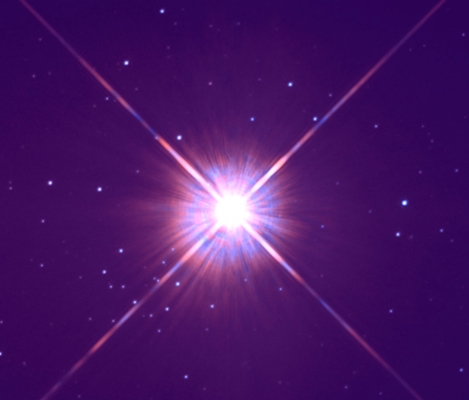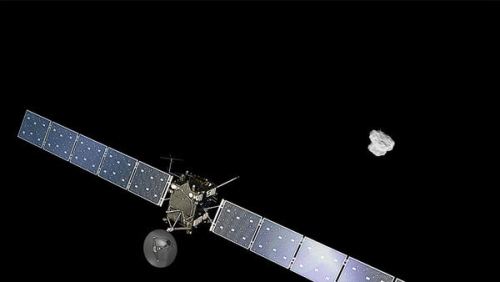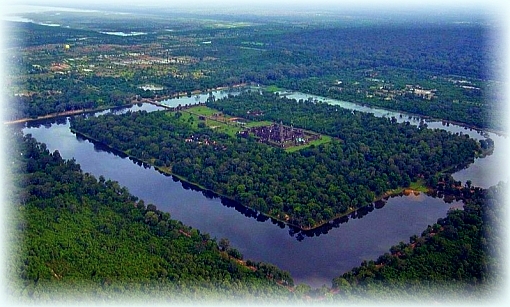 |
| Plato by Raphael |
Thinking and motivations, both good and destructive, in society develops over centuries from its experiences. Since these experiences are different in different parts of the world, it is not surprising that some of this thinking is different. Usually in fictional imagination when visits by aliens from other worlds are visualized, many in western societies imagine them as attacking humans. This has surprised people from India, why would they attack? It is so much easier, nice and advantageous to love instead and if there are aliens intelligent enough to learn travel through space surely they are not as stupid as to pounce on humans jumping around and shouting hoola hoola hoo! This was the philosophy of ancient humans too that gave birth to human civilization in Southern India and later Indus-Saraswati valley, Sumeria etc. The dark foreign Sumerians with their own strange language, local Akkadians and others like the fair northern Armenians came together in brotherhood to create the beginnings of human civilization. It is a view that different races and nations of the world are a family, not adversaries. An idea that was etched in stone by ancient Sanskrit speakers as, Vasudev Kutambkam. This philosophy is so deeply etched in Indian psyche that they have refused until modern times to accept the world as a group of adversary nations, despite western pressure to do so, for in their imagination that is a course that leads to destruction of human civilization even an apocalypse, not its growth. They continue to view the world as a family.
The Last Glacial Maximum (LGM) was a period in
the climate history when ice sheets were at their most recent maximum extension,
between 27000 and 19,000 years ago. It
was a time when humans survived by moving to warmer southern areas. One such
was what is now a submerged area south of south India
and along some of the coasts of southern India that existed because of a
dramatic drop in sea levels around the time.
It is here that refugees from the north would have
encountered existing early humans of the early Australoid races that had
arrived and settled there much earlier, as per modern out of Africa genetic indication, and although this is speculative the
earliest of human civilizations may have developed in this area arising from
the force of the cultural mix of two different races and cultures. The people that emerged from the mix would have
borne predominantly Australoid features and spoken ancient forms of archaic
Tamil because despite the refugee influx the majority would have been an Australoid race and archaic Tamil has its roots in ancient Austric langauages as discussed in older posts of this blog.. There are ancient Tamil records that describe ancient Tamil
civilizations as old or older than
10,000 BC
The
Late Glacial Maximum, 13,000-10,000 years ago
is defined primarily by the beginning of the modern warm period, in which the earth warmed substantially. It is
at this time that human populations, previously forced into
refuge areas as a result of Last
Glacial Maximum climatic conditions, are likely to have gradually moved northwards as earlier cities and
settlements began to submerge due to rising sea levels, and the northern climate was no longer hostile.
During the last ice age sea level was at least 120 m lower
than it is today exposing much more area on the continents. Many changes took
place as sea level rose including the submergence of coastal regions. An
interval of rapid sea level rise was first identified by a hiatus in coral
growth in the Caribbean about 7600 years ago.
Southampton researchers have estimated that sea-level rose by an average of
about 1 meter per century at the end of the last Ice Age, interrupted by rapid
'jumps' during which it rose by up to 2.5 meters per century. Global sea level
rose by a total of more than 120 meters as the vast ice sheets of the last Ice
Age melted back. This melt-back lasted from about 19,000 to about 6,000 years
ago, meaning that the average rate of sea-level rise was roughly 1 meter per
century.
(
http://www.sciencedaily.com/releases/2010/12/101201120605.htm)
Ancient Tamil records do mention
the submergence of an ancient advanced Tamil civilization prior to 5500
BP.
The Tamil people presently
inhabit southern India and
it is possible that in the past they may have inhabited the region up to the
southern limits of the Indus civilization in the south along the Indian Ocean
coast i.e. present day Dwarka, the mouth of the Saraswati
River and westwards towards the mouth
of Indus valley.
The evidence thus far reveals the existence of man-made
structures twenty-three metres beneath the sea, five kilometres off the
Tarangambadi- Poompuhar coast near Nagapattinam in South
India. Its existence at such a depth is calculated as having taken
place over many thousand years ago. This ties in with the geological evidence
of such happenings at that time as well as the Tamil traditions of the first
two Tamil Sangams referred to earlier.
The unfolding archaeological and geological evidence is
proving to be the historical validation that Tamil civilisation which reached a
high-point during those two Tamil Sangams had their beginnings 11,000 years ago
or circa 9,000 BC. What is the evidence currently available, be it
archaeological, geological or other which will substantiate the Kumari Kandam
tradition?
According to N. Parameswaran, quoting from ancient Tamil literary
tradition,
According to the Kumari Kandam
tradition, over a period of about just 11,000 years (beginning around 9000BC),
the Pandyans, a historical dynasty of Tamil kings, formed three Tamil Sangams,
in order to foster among their subjects the love of knowledge, literature and
poetry.
The first Sangam was
head-quartered in a city named Then-madurai it was patronised by a succession
of eighty-nine kings and survived for an unbroken period of 4,400 years during
which time it approved an immense collection of poems and literature. At the
end of that golden age, the First Sangam was destroyed when a deluge arose and
Then-Madurai itself was swallowed by the sea along with large parts of the land
area of Kumari Kandam.
However, the survivors, saving some of the books, were able to relocate further
north. They established a Second Sangam in a city called Kavatapuram which
lasted 3,700 years. The same fate befell this city as well, when it too was
swallowed by the sea and lost forever all its works with the sole exception of
the Tolkappiyam, a work on Tamil grammar. Following the inundation of
Kavatapuram, the survivors once again relocated The Third Sangam lasted for a
period of 1850 years and most scholars agree that that Sangam terminated around
350 AD. As observed by Prof. (Dr) M.
Sunderam, “The tradition of the loss of a vast continent by deluge of the sea
is too strong in the ancient Tamil classics to be ignored by any serious type
of inquiry.”
It is
interesting to note that gradual submergence of cities is in agreement with
gradual rise of sea levels that lasted up to around six thousand years ago as
per the South Hampton study.. Tamils
from the south appear to have migrated north to the southern tip of what later
became the Indus valley and Saraswati valley
civilizations. Their grand coastal cities were later eroded as the sea rose.
These people who settled coastal regions over the years were responsible for
the creation of an ancient civilization that preceded both the Indus valley and Sumerian civilizations.
Ruins have been found somewhat a
little to the south off the Konkan coast.
In what could turn out to be a major discovery; researchers have found a
wall-like structure, which is 24km long, 2.7m in height, and around 2.5m in
width. The structure shows uniformity in construction. “The structure is not
continuous from Shrivardhan to Raigad, but it is uniform. It has been found 3m
below the present sea level. Considering the uniformity of the structure, it is
obvious that the structure is man-made,” said Dr Ashok Marathe, department of
archaeology, Deccan College Postgraduate and Research Institute,
Pune.
This joint expedition carried out
by Deccan College, Pune and Department of Science
and Technology, Central Government, has been in progress since 2005. “We were
actually studying the impacts of tsunami and earthquake on western coast when
we first found this structure in Valneshwar,” said Marathe. However, the age of
the structure was decided on the basis of sea level mapping. “There have been
exhaustive studies about the sea water coming inside the land. Based on calculations,
experts from National Institute of Oceanography (NIO) pegged the age of the
wall at around 6,000 BC,” Marathe informed.
An Archaic Tamil origin of Indus, Elam and Sumer
If it is assumed that an advanced
civilization existed prior to Indus, Elamite and Sumerian civilizations and
that due to submergence groups from this civilization migrated northwards from
South Asia and dominated the local less civilized population in an analogous
manner to what Europeans did when they colonized much of the world a few
centuries ago, then it would explain the emergence of civilization in these
regions. Plato has described such a scenario in his records of Atlantis, a civilization that preceded the Sumerians and was submerged in a place with plantain trees and elephants.
Initially an Archaic Tamil language of the ruling classes would have
been the official language while the language of the local people would have
been in common use as happened during European colonization. This is in fact
proved by written records as far as Sumer is concerned where eventually
the Akkadian language of the majority replaced Archaic Tamil. Similarly it has
also been deduced that the language of ancient Elam was a form of archaic
Tamil language ( see older posts in this blog for references). It is likely that the scenario was similar in Indus
valley. Here the language of the majority was an Indo-European language that
preceded Sanskrit and here too the archaic Tamil was likely lost with the
decline of the Indus civilization due to the drying up of the Saraswati River.
It is interesting to note that in
ancient Sanskrit stories the rulers are often shown as dark persons where the
majority was a fairer Indo-European population. This includes leading Kings in
mythology such as Krishna and Rama. The
situation was precisely similar in Sumeria. it is also interesting to note that this agrees with the story and timing of ancient Atlantis as described by Plato. History too would seem to have come a full circle with a dominance of darker populations by fairer Europeans in the colonial period balancing the karma of the original fair races dominated by darker ones. A few very fair Tamil families continue to exist in southern India while some very dark ones exist till this day in northern India. The early racial mixes of thousands of years ago appear to continue up to present times.
It is worth noting that different branches and tribes of the Austric races e.g. the Bhils and the Gonds remained undeveloped in forest areas of central and eastern India untouched by civilization until recent times. These were most likely the Austric people who escaped the force of a cultural mix that created the first of human civilization in the warmest southern tips of South Asia leading to the development of advanced Tamil civilization and races. Unlike the Tamil people who display a mix of dark and fairer castes along with a considerable influence of Sanskrit of Indo-European group in the language. On the other hand the tribal Austrics in other parts are primarily still dark in complexion.
UPDATE SEPTEMBER , 3, 2018
Recent research is confirming what this and other notes in
this blog had already deduced on the Tamil origin of Indus civilization. See
this report,
To quote from it,
“Here's a what a draft paper on an excavation made in Haryana's
Rakhigarhi says: One 4,500-year-old male skeleton is more closely related to
the Irula (a south Indian tribal community) than to Indian populations with a
higher degree of West Eurasian-related ancestry. The paper also suggests that
the area's ancient citizens probably spoke an early Dravidian language. Read
India Today magazine's cover story on the Rakhigarhi findings “





















